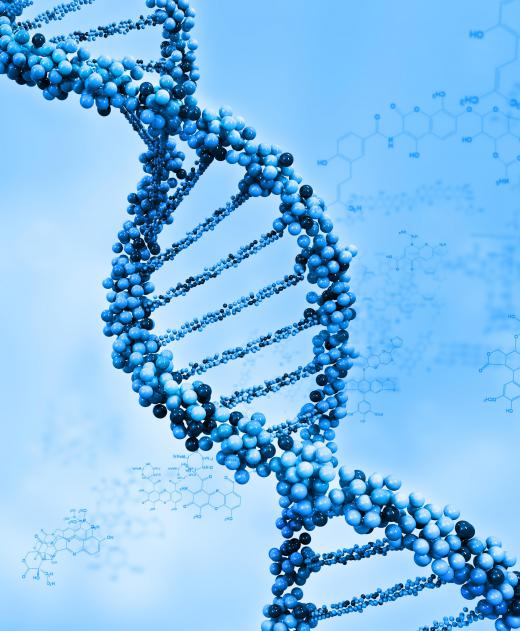What Are Transposons?
Transposons, also called transposable elements (TEs) or "jumping genes," are genetic patterns that move from one genome placement to another. TEs are commonly found within the deoxyribonucleic acid (DNA) sequences of living organisms, including humans and plants. The changing location of transposons within a genetic structure can sometimes cause mutations or visible blemishes.
Initially, transposable elements were discovered by Barbara McClintock and Marcus Rhoades in the early 1930s. Prior to this discovery, scientists believed that DNA was stable and unchanging. The study of transposons greatly improved the understanding of how genetic factors can influence an organism. Although these groundbreaking studies were not immediately accepted, McClintock's work earned her a Nobel Prize in 1983.

There are two general varieties of transposons. Class II transposons are composed of DNA that moves from one genetic location to another in a direct manner, similar to "copy and pasting" letters from one area of a sentence to a different place. Alternatively, class I transposons have an extra step in the duplication process, copying a pattern of DNA onto ribonucleic acid (RNA), and then converting it back into DNA at another location. A Class I transposon is sometimes called a "retrotransposon," which means that each segment of genetic information must be decoded from RNA before it can be inserted in a new location.

Scientists do not fully understand the benefit or purpose of transposable elements as of early 2012. In fact, many experts refer to them as "junk" DNA because they do not seem to improve the quality of a host organism. Some scientists theorize that the variety caused by transposable elements is important for natural selection; however, there is no proof that this is true.
While research on the benefits continues, the physical changes caused by TEs are easy to observe. As an example, the genetic mutations caused by transposable elements can be seen in the "Indian" variety of corn. Each transposon creates an off-colored kernel. Patterns of dark and light mutated kernels give the cob a mosaic appearance. These transposon gene patterns do not harm the plant, but do give it a discolored appearance.
Some researchers hope to use transposable elements to modify genetic structures in a positive way. By controlling each transposon, scientists may be able to prevent undesirable mutations from occurring. The ability to influence mutations at the genetic level could lead to major breakthroughs in disease treatment and prevention.
AS FEATURED ON:
AS FEATURED ON:












Discuss this Article
Post your comments